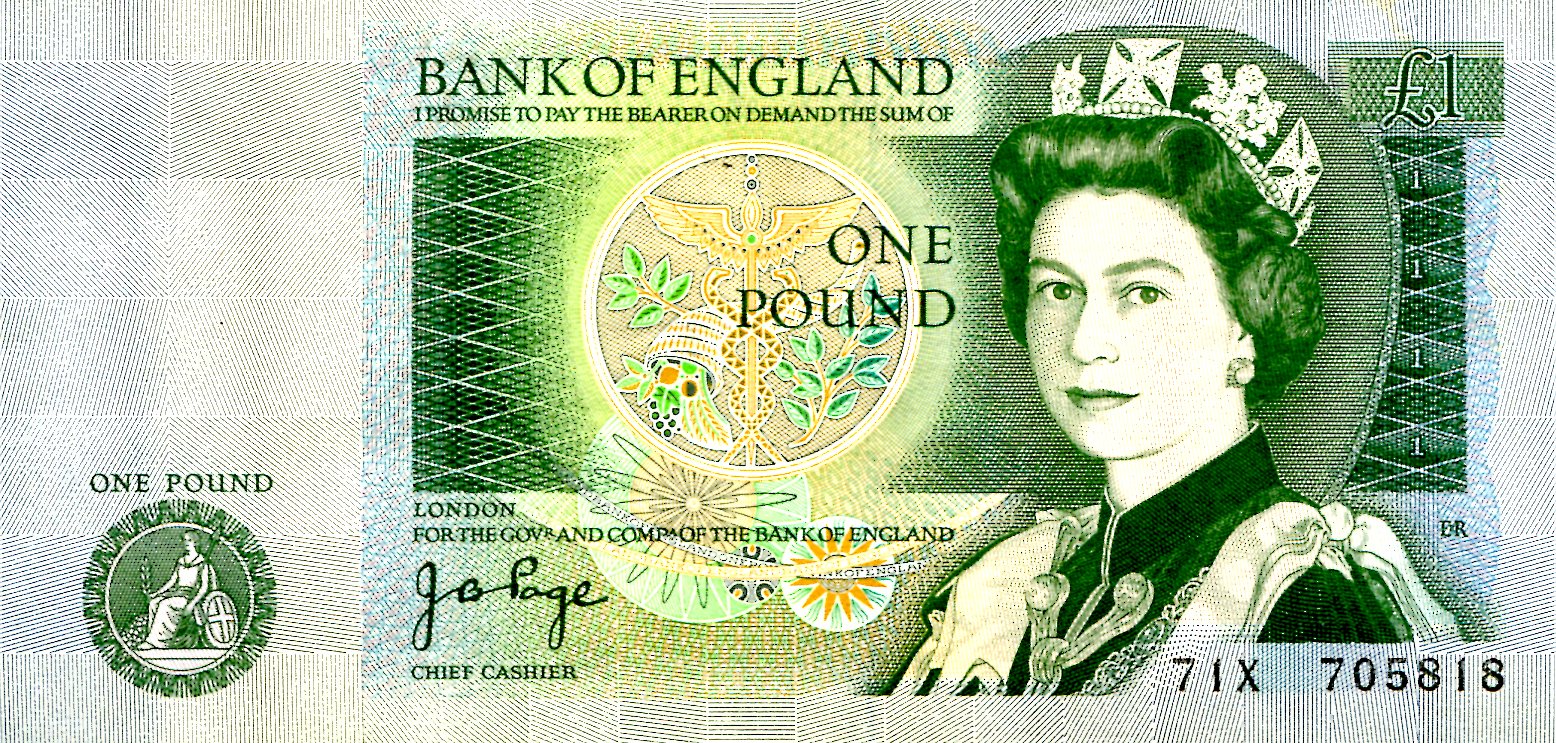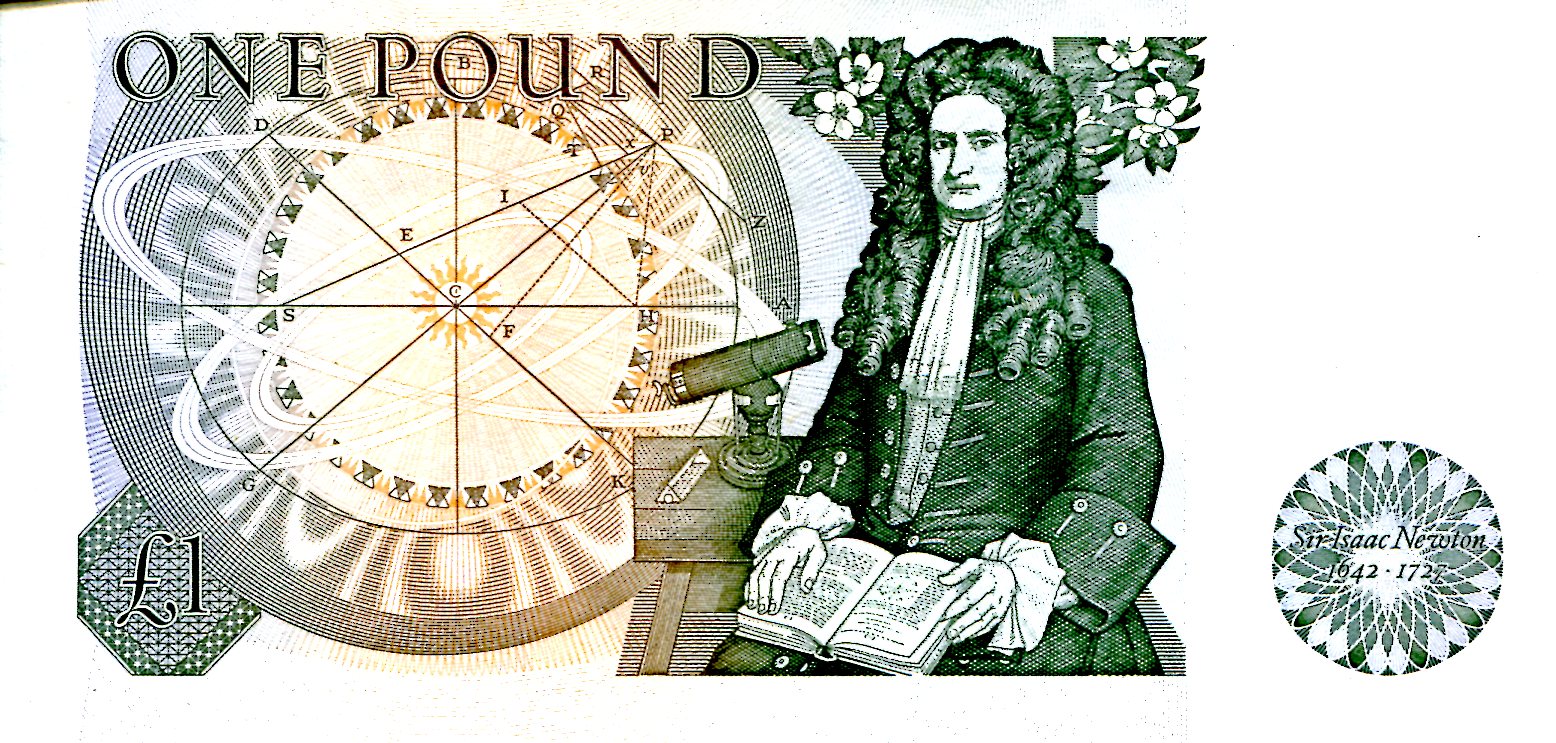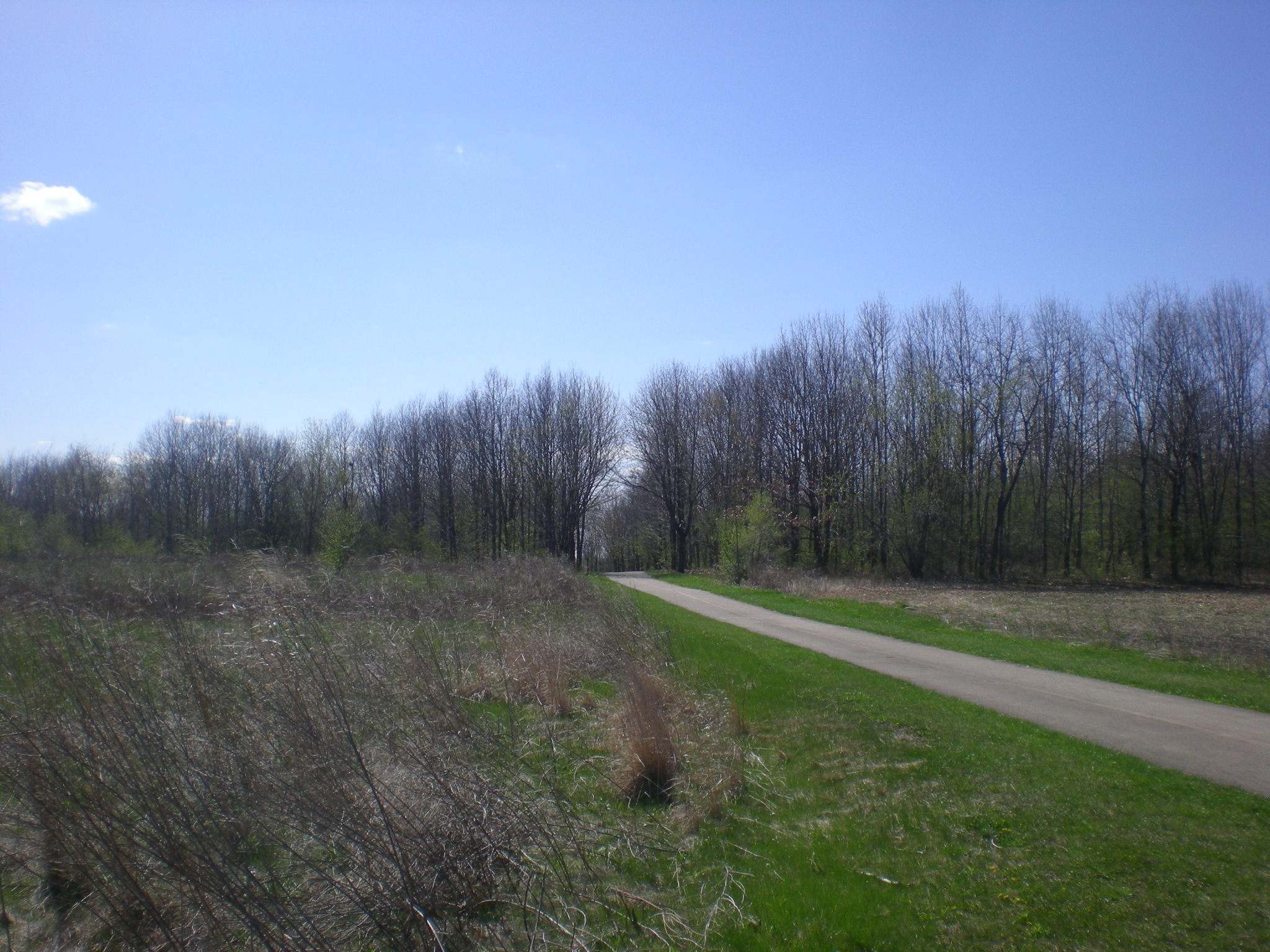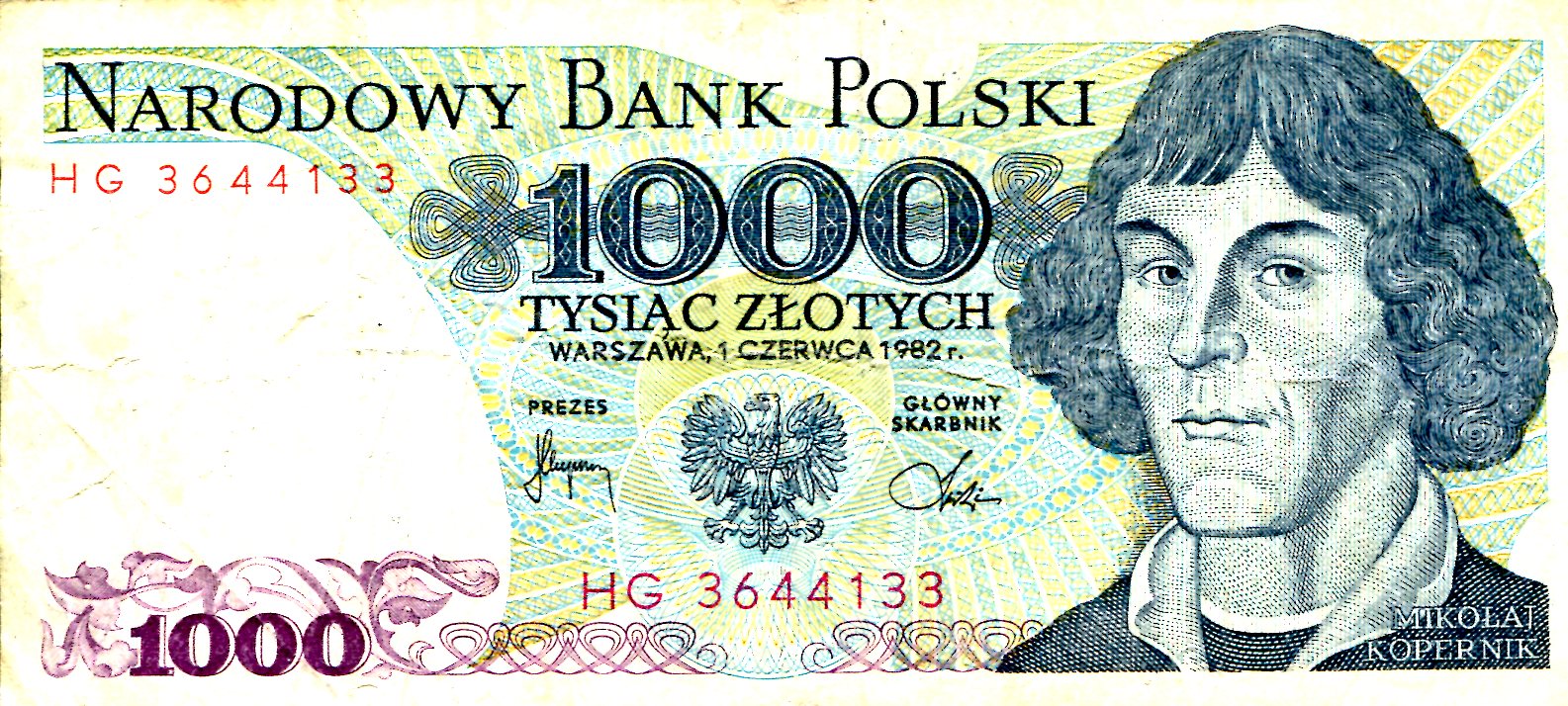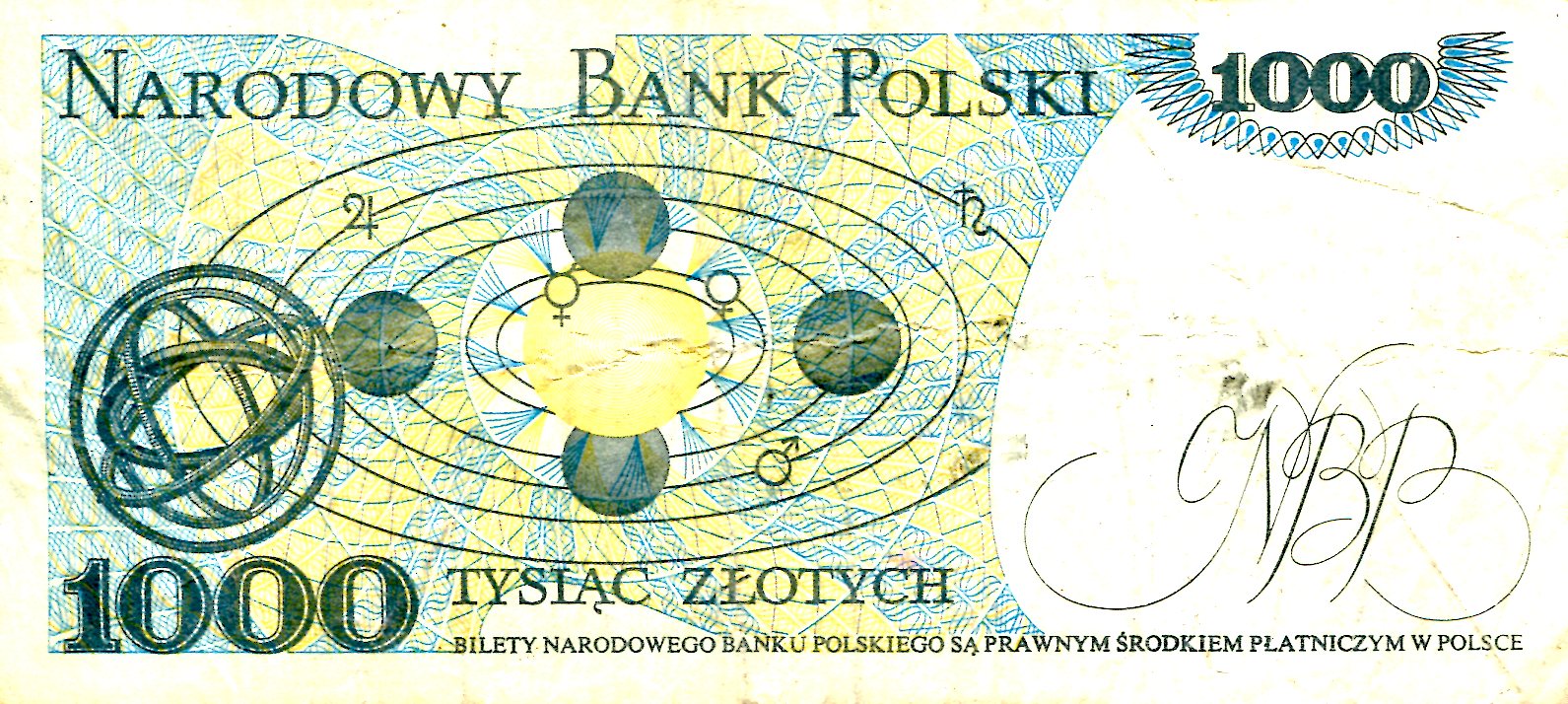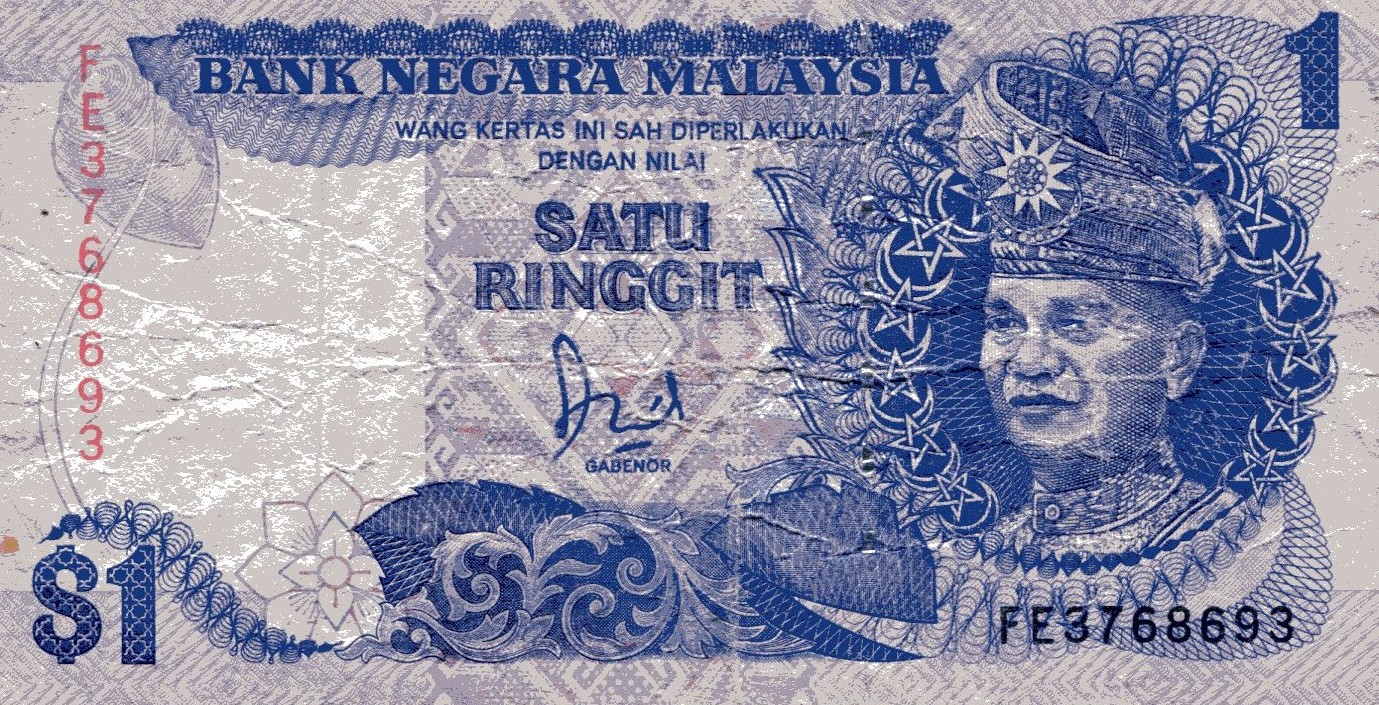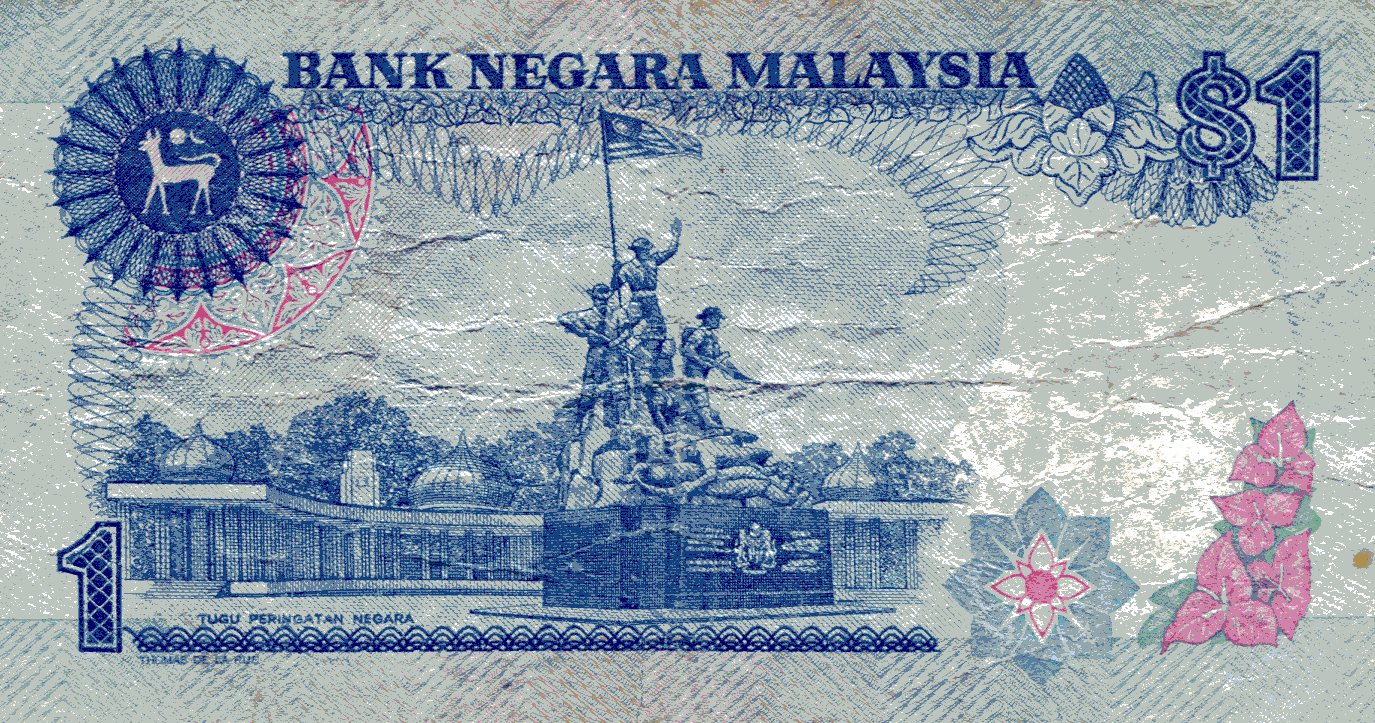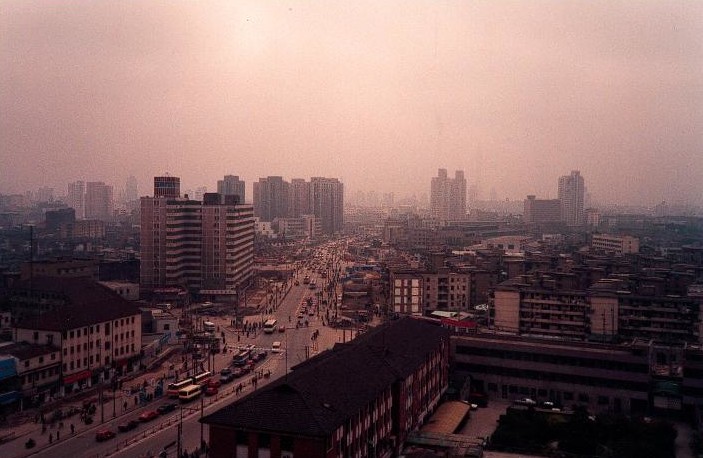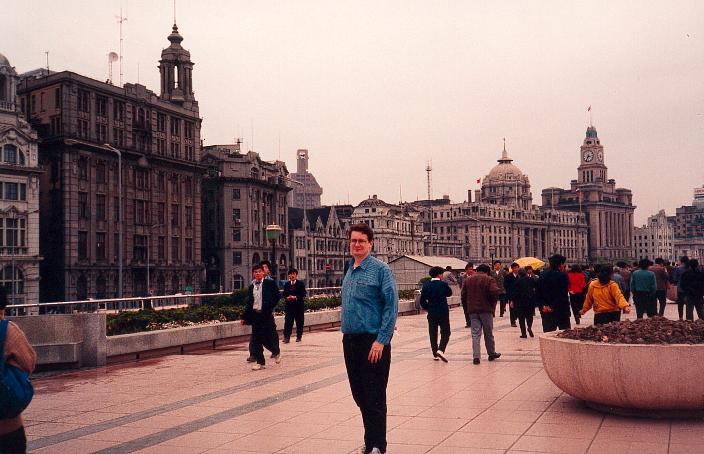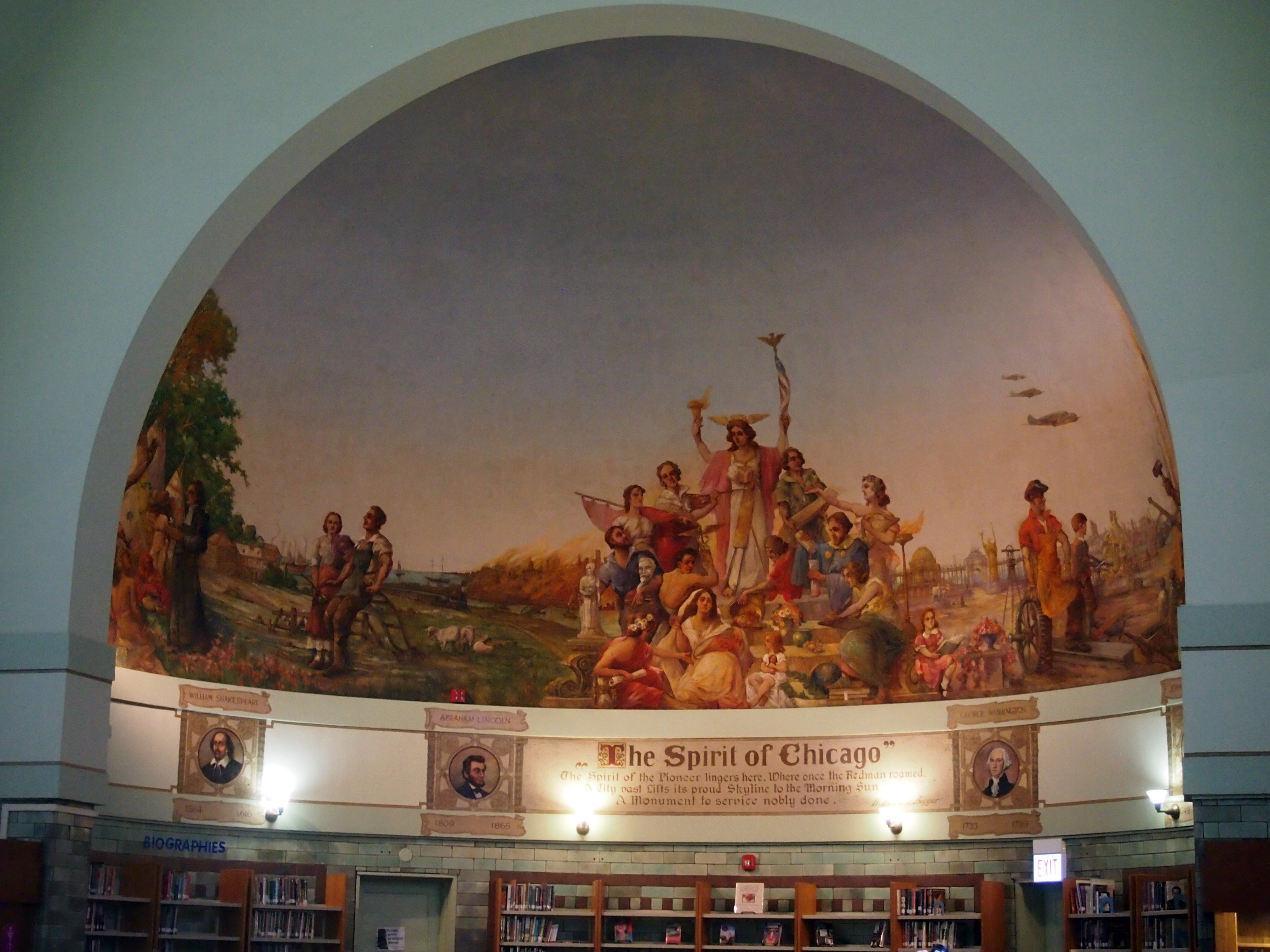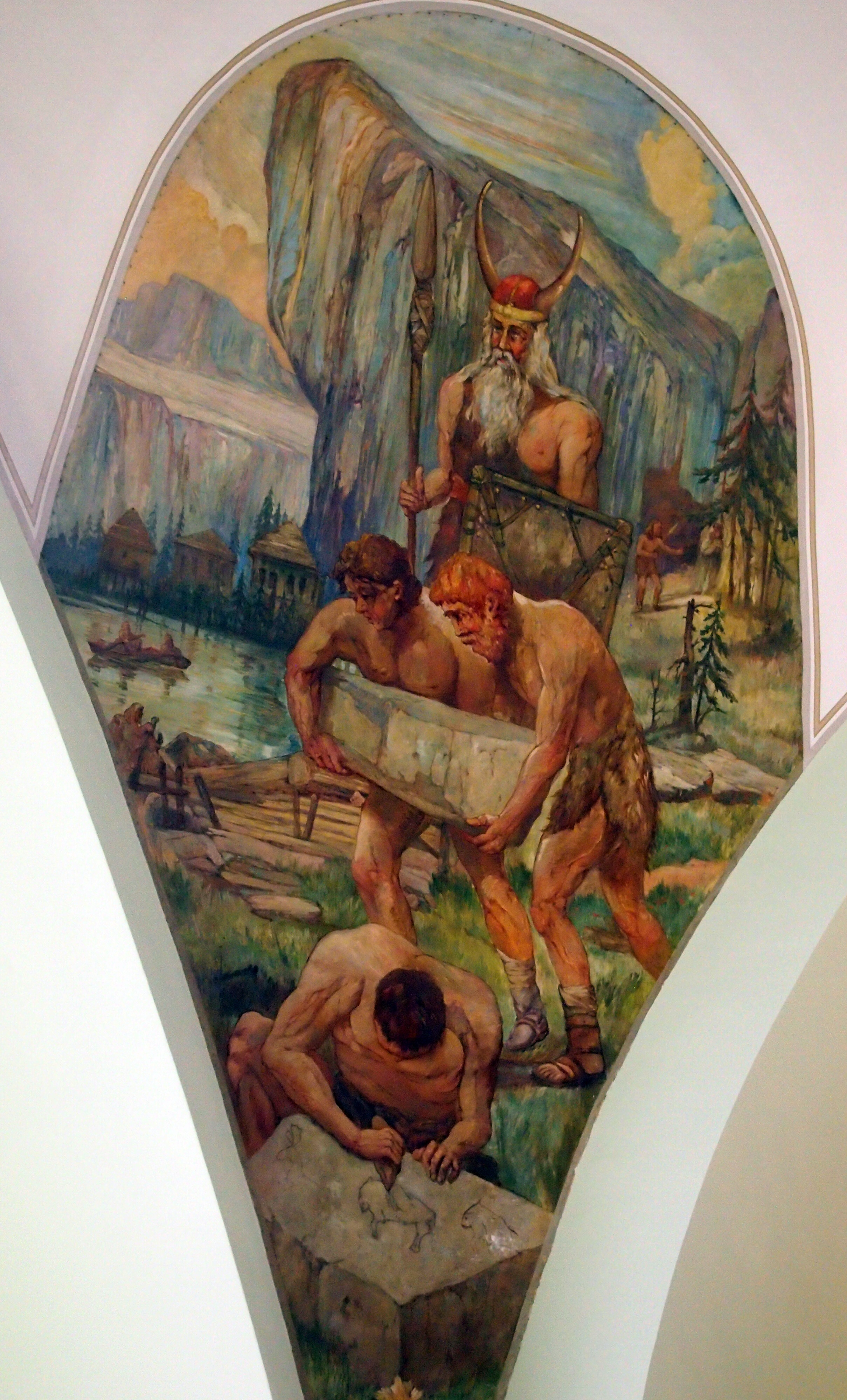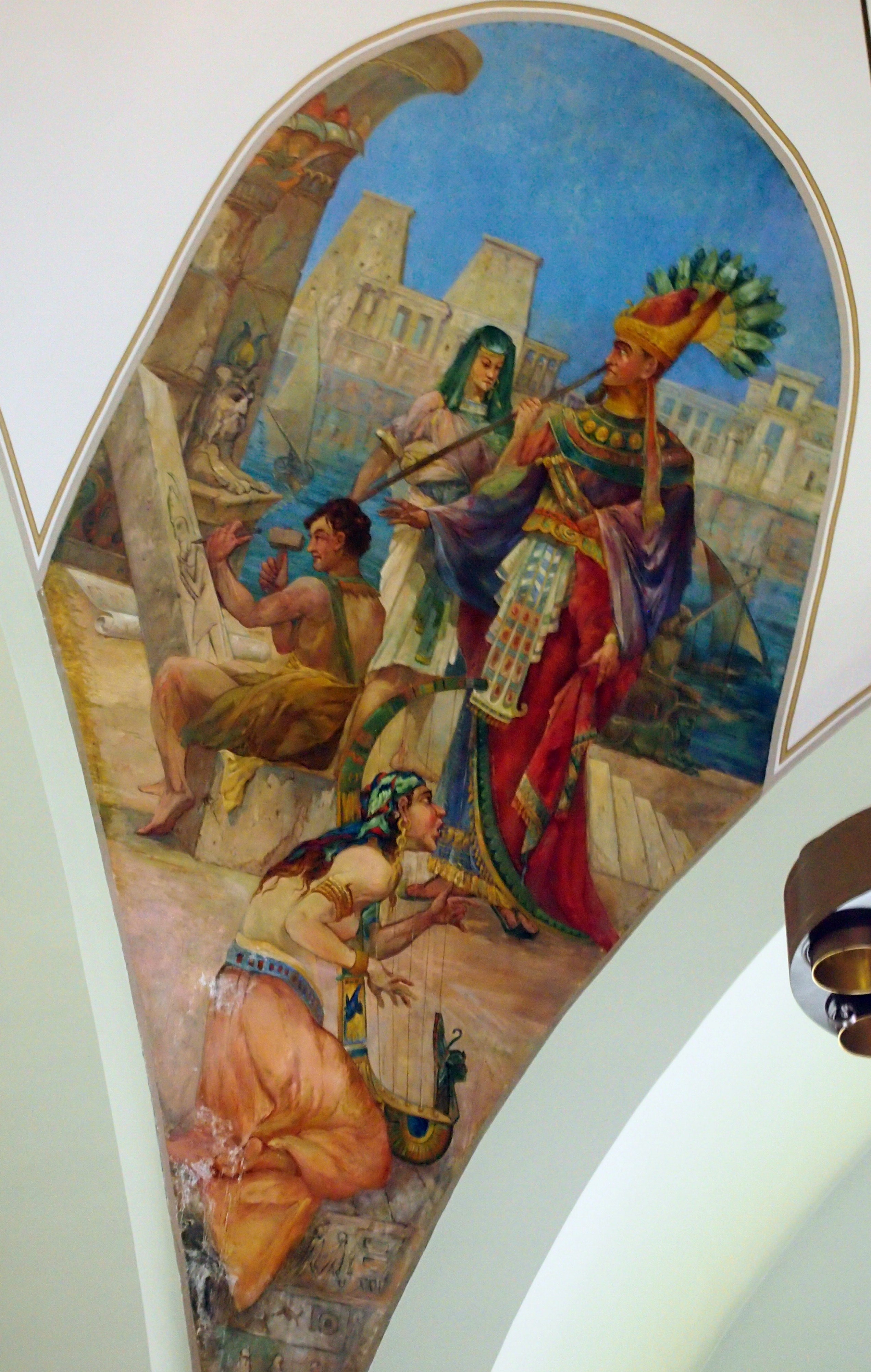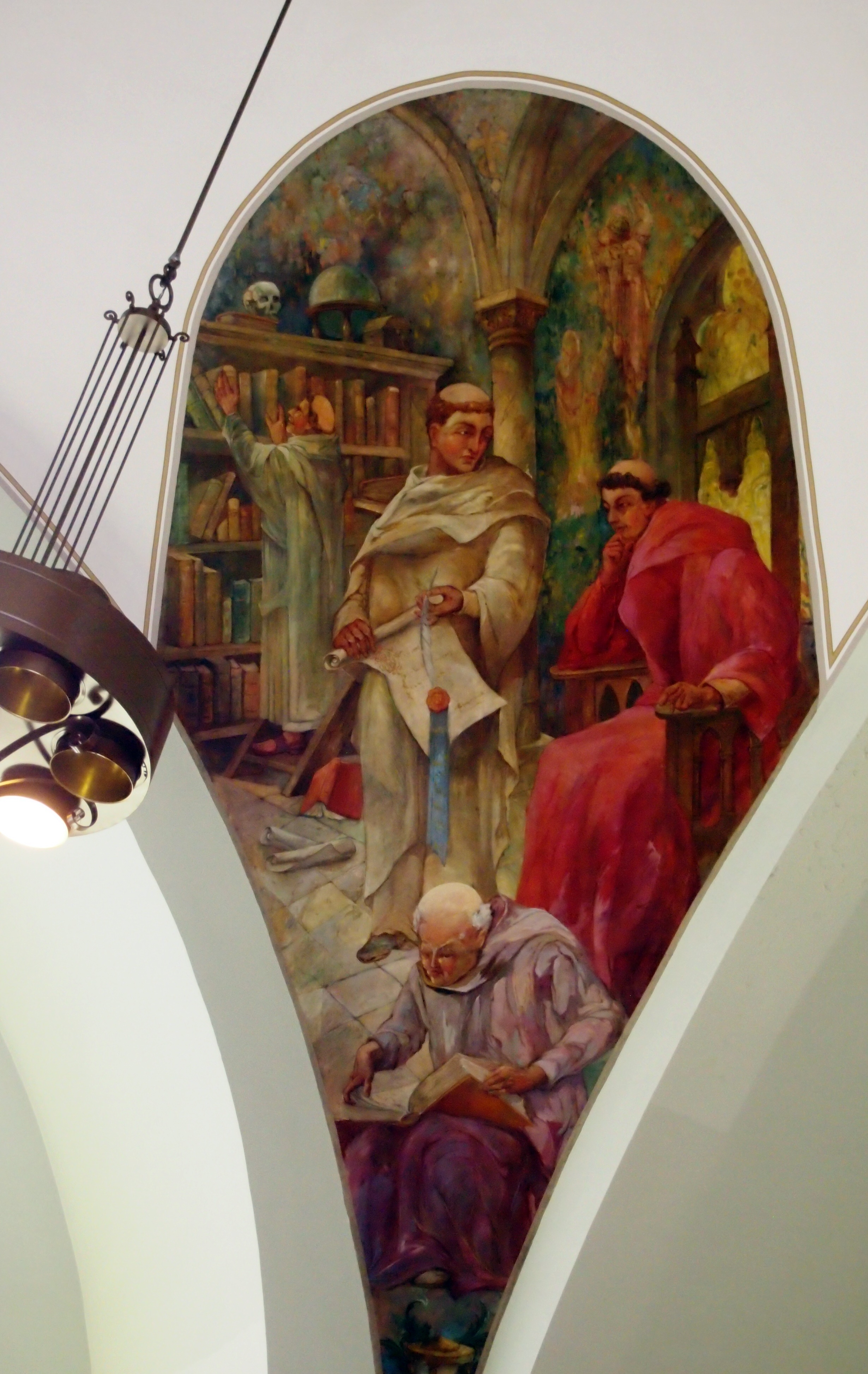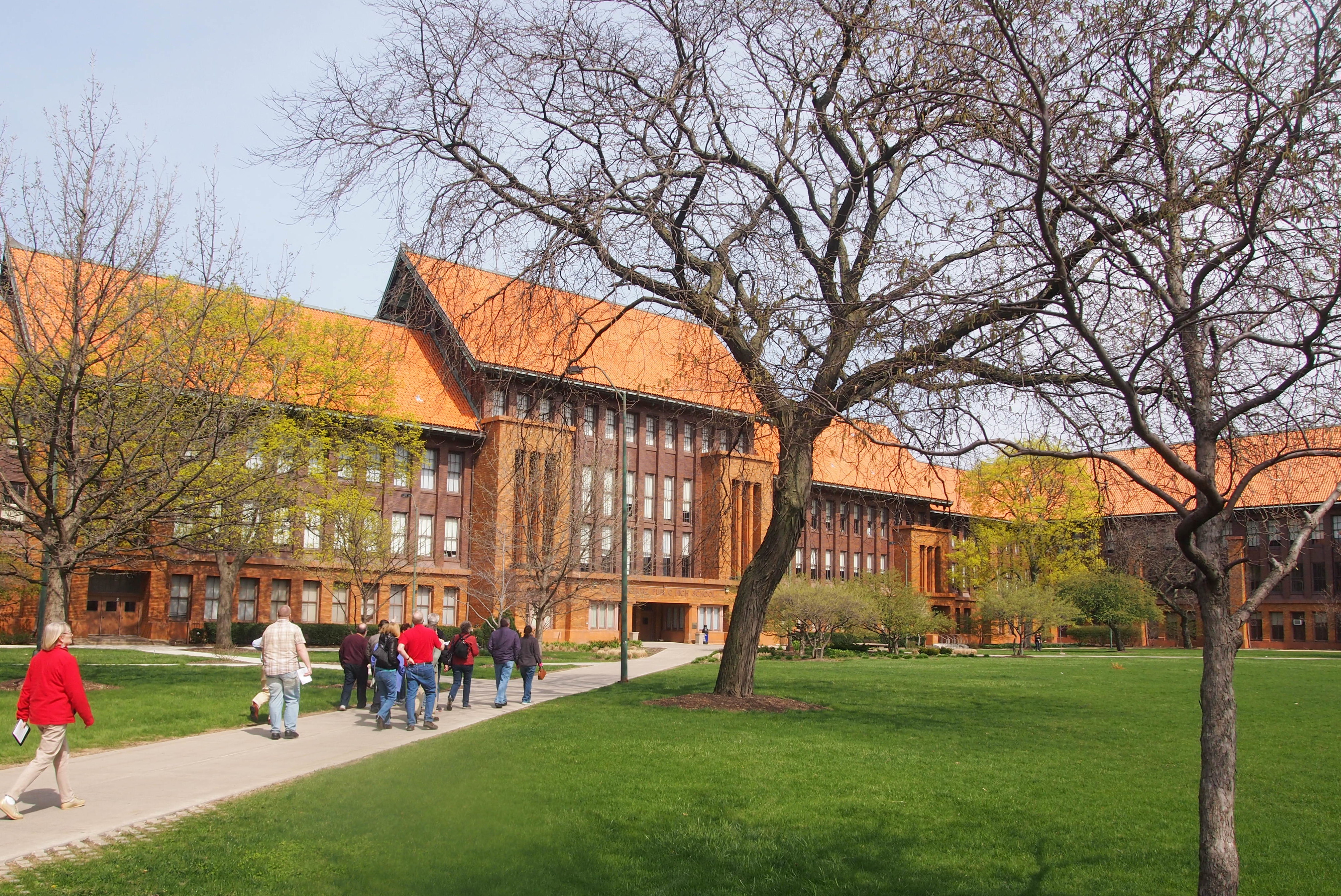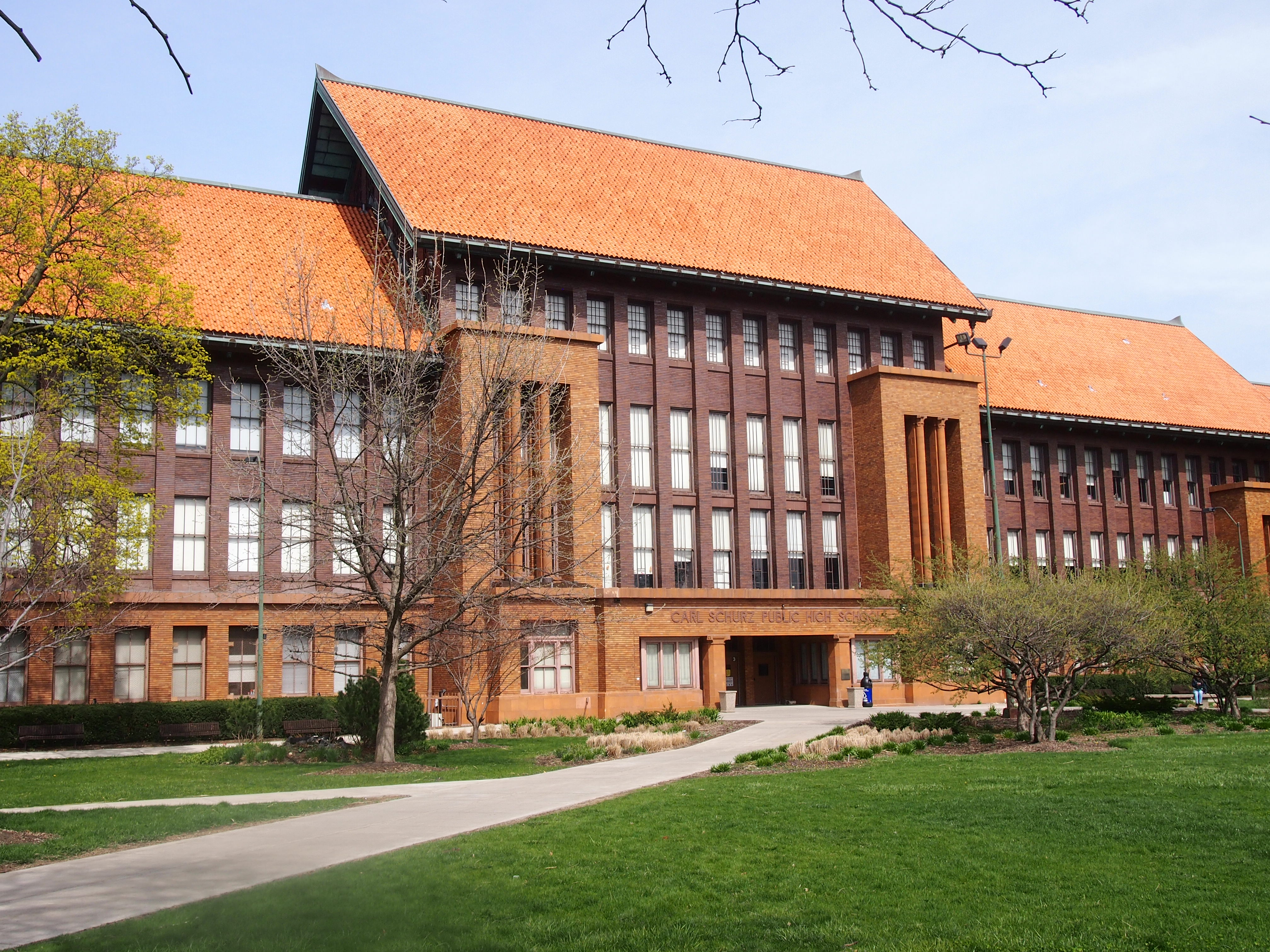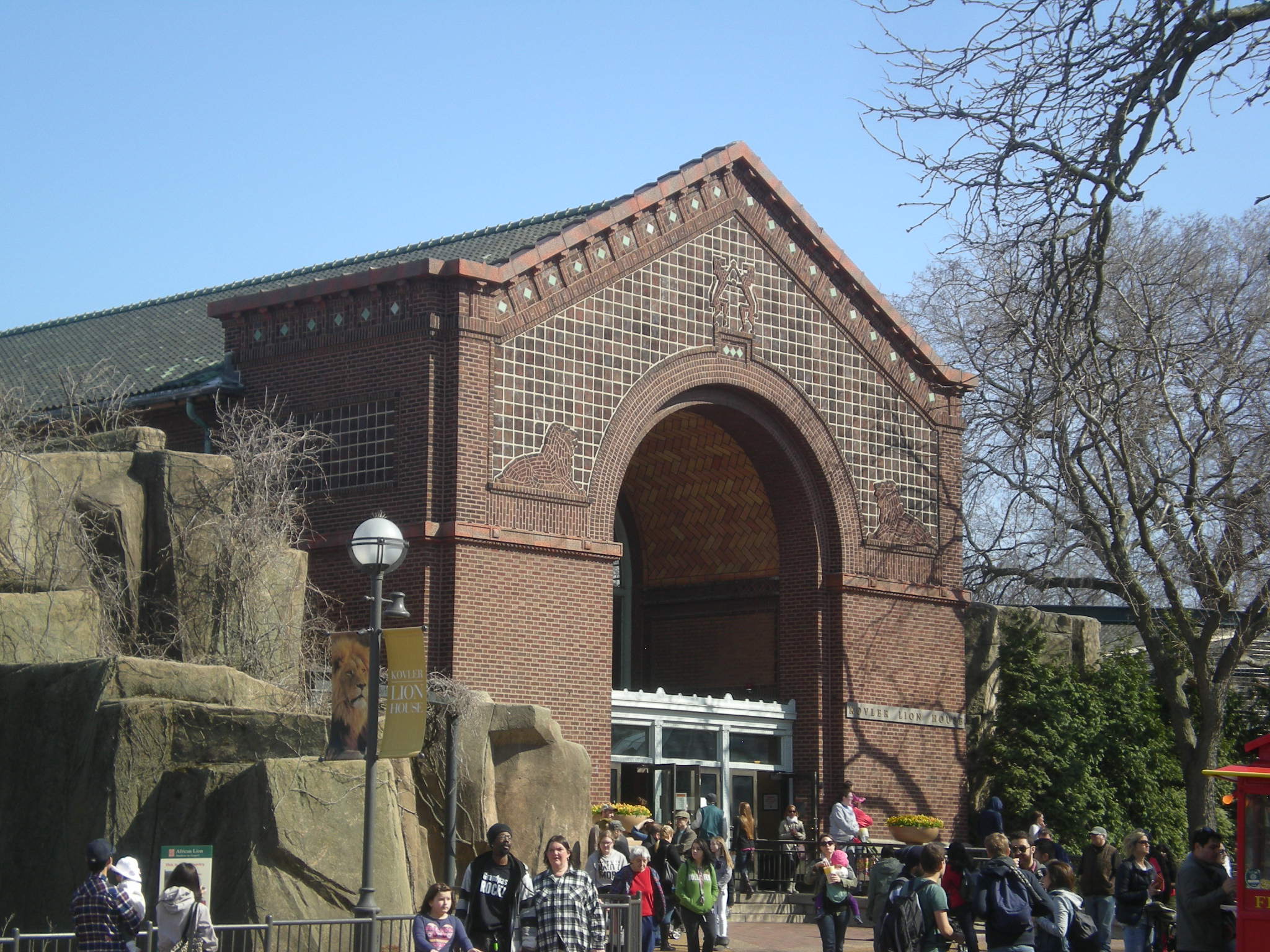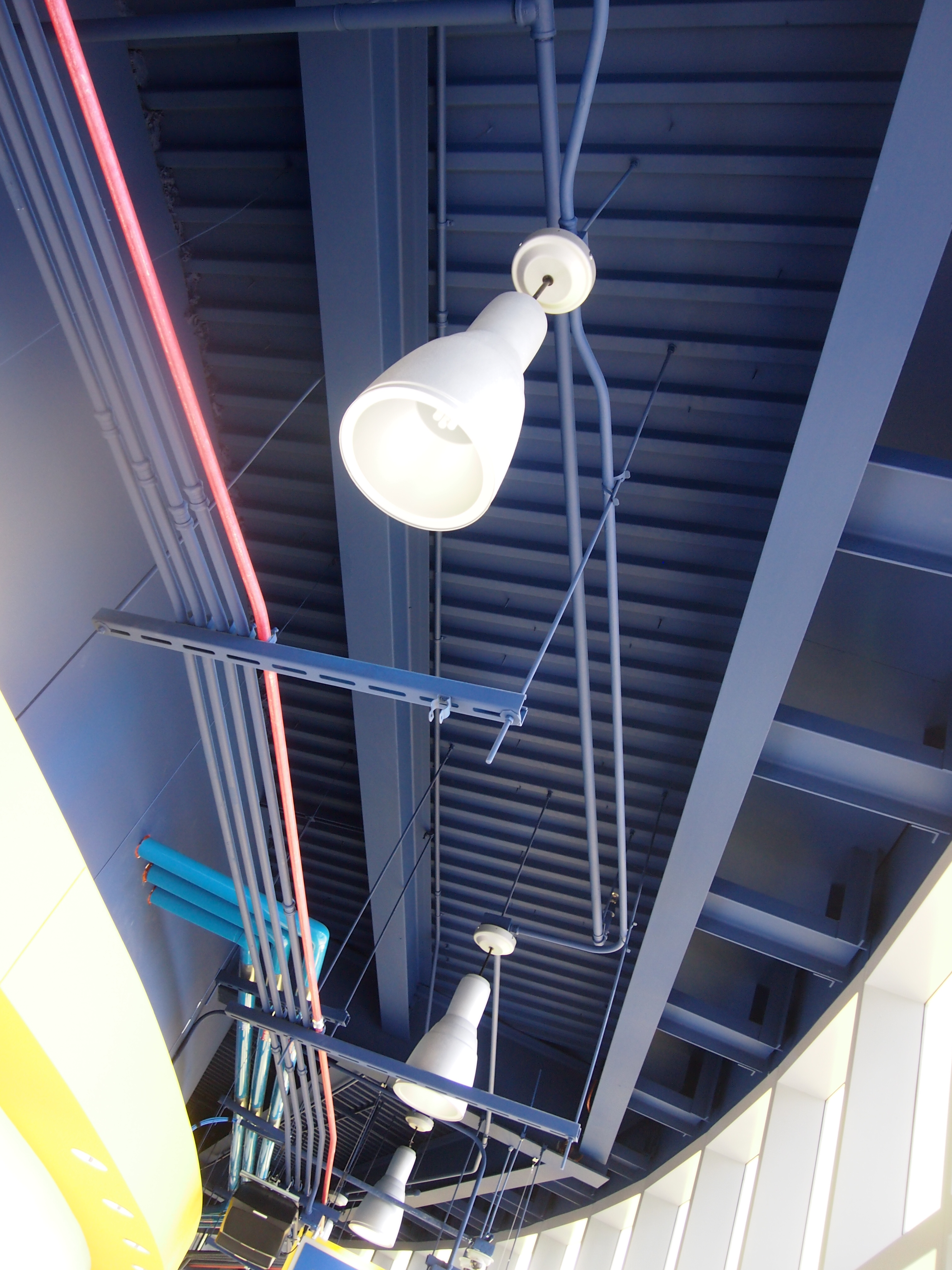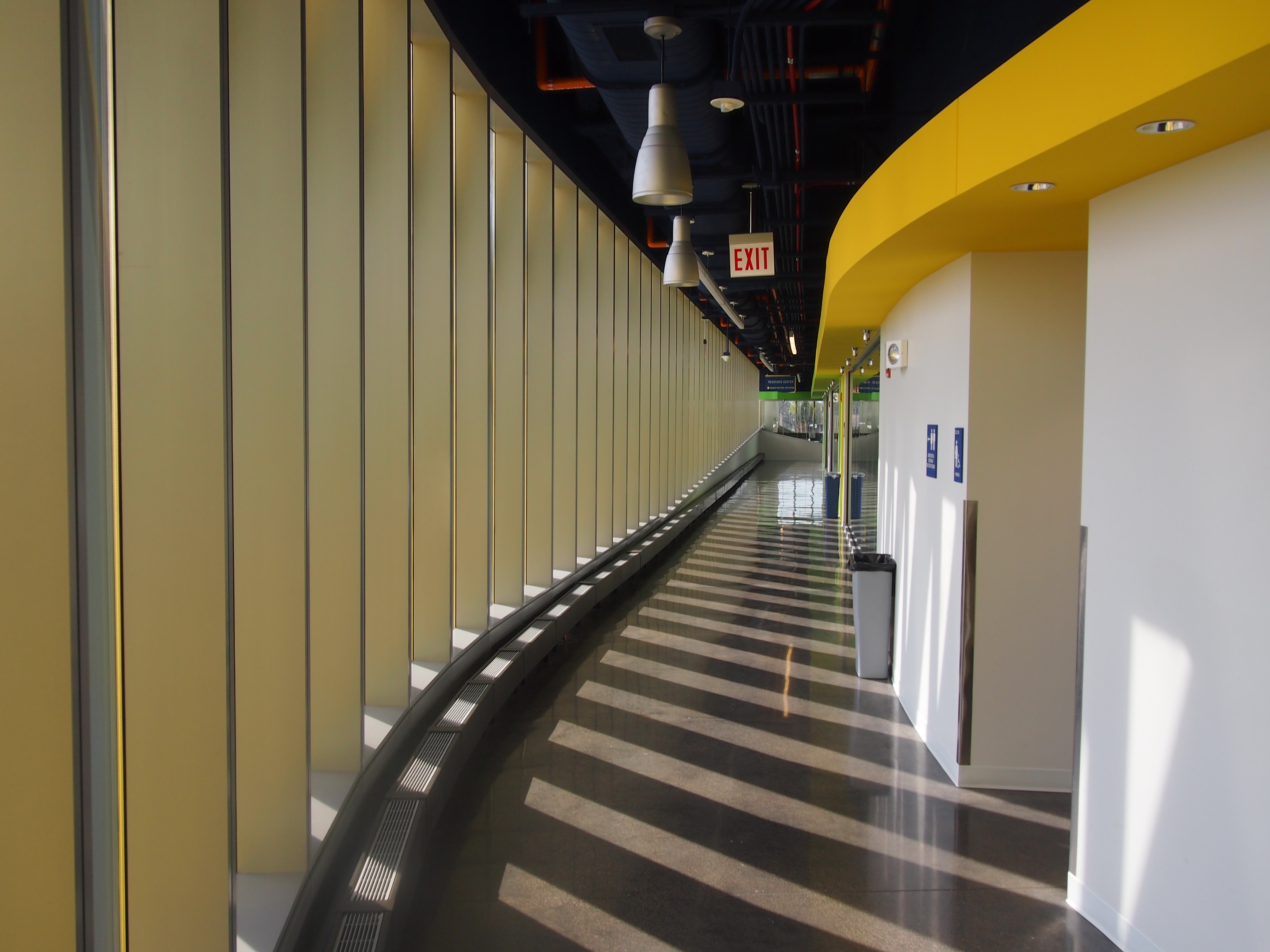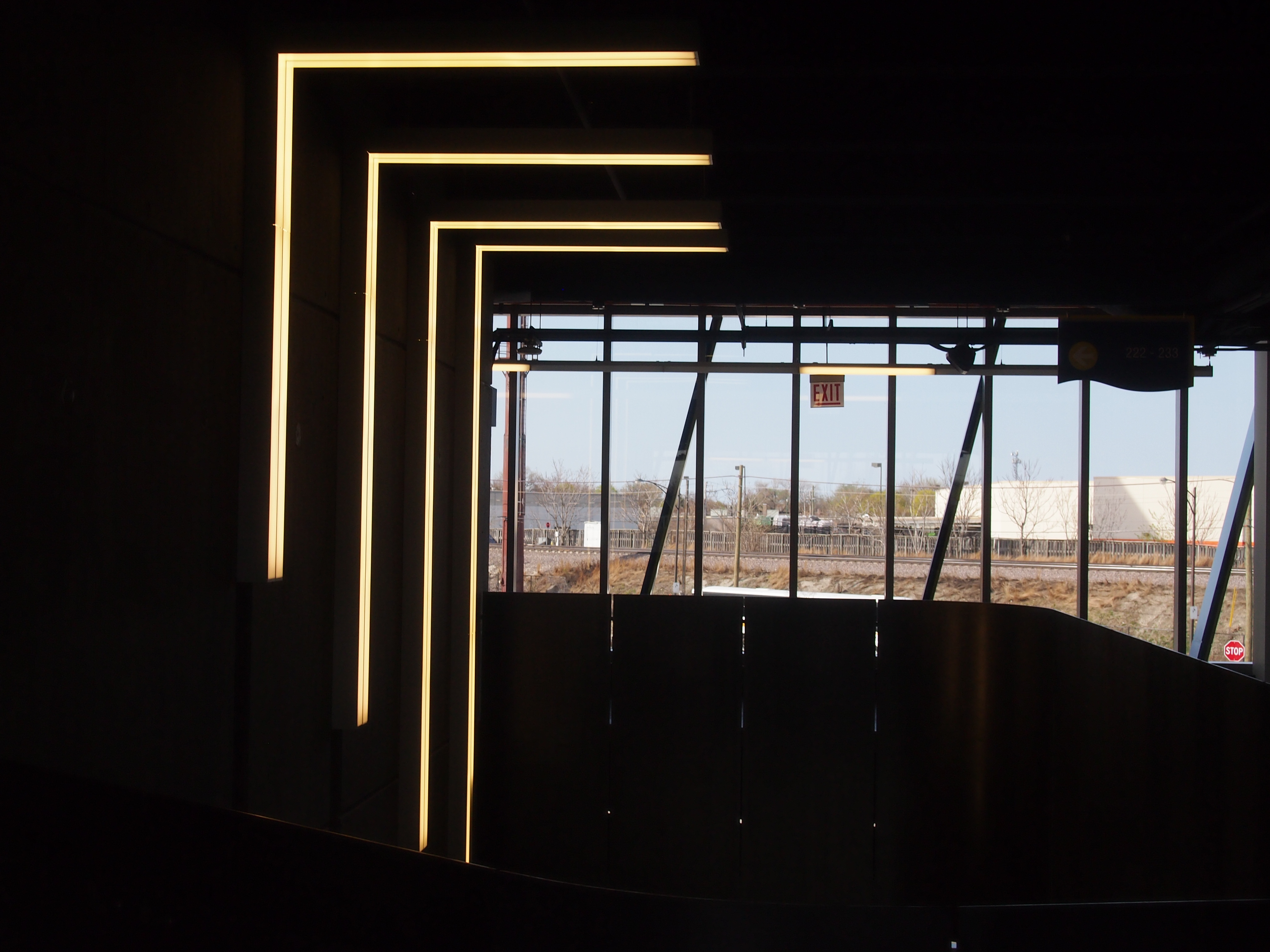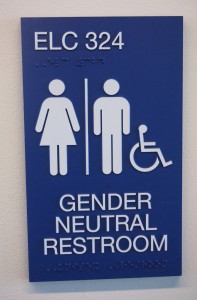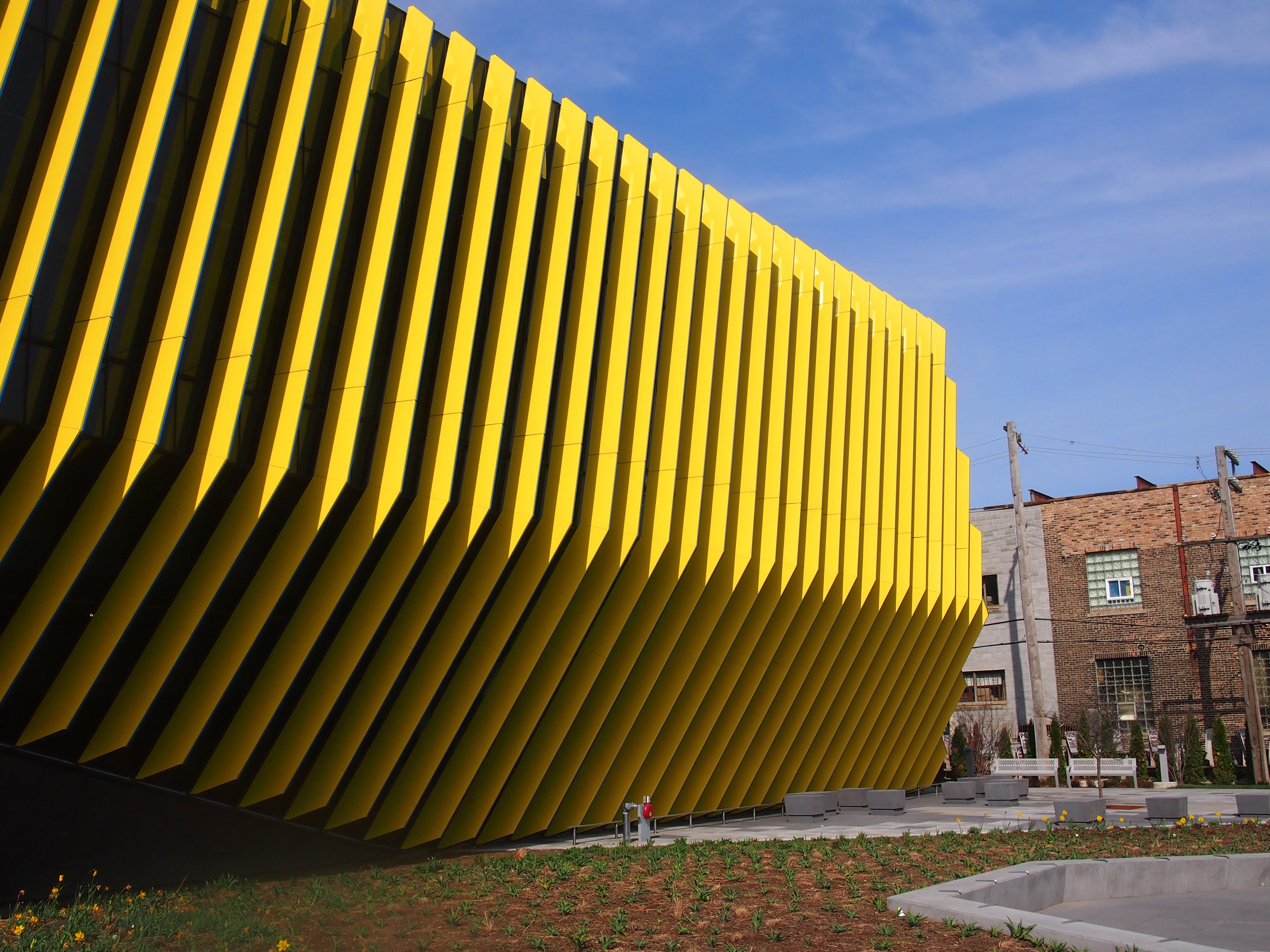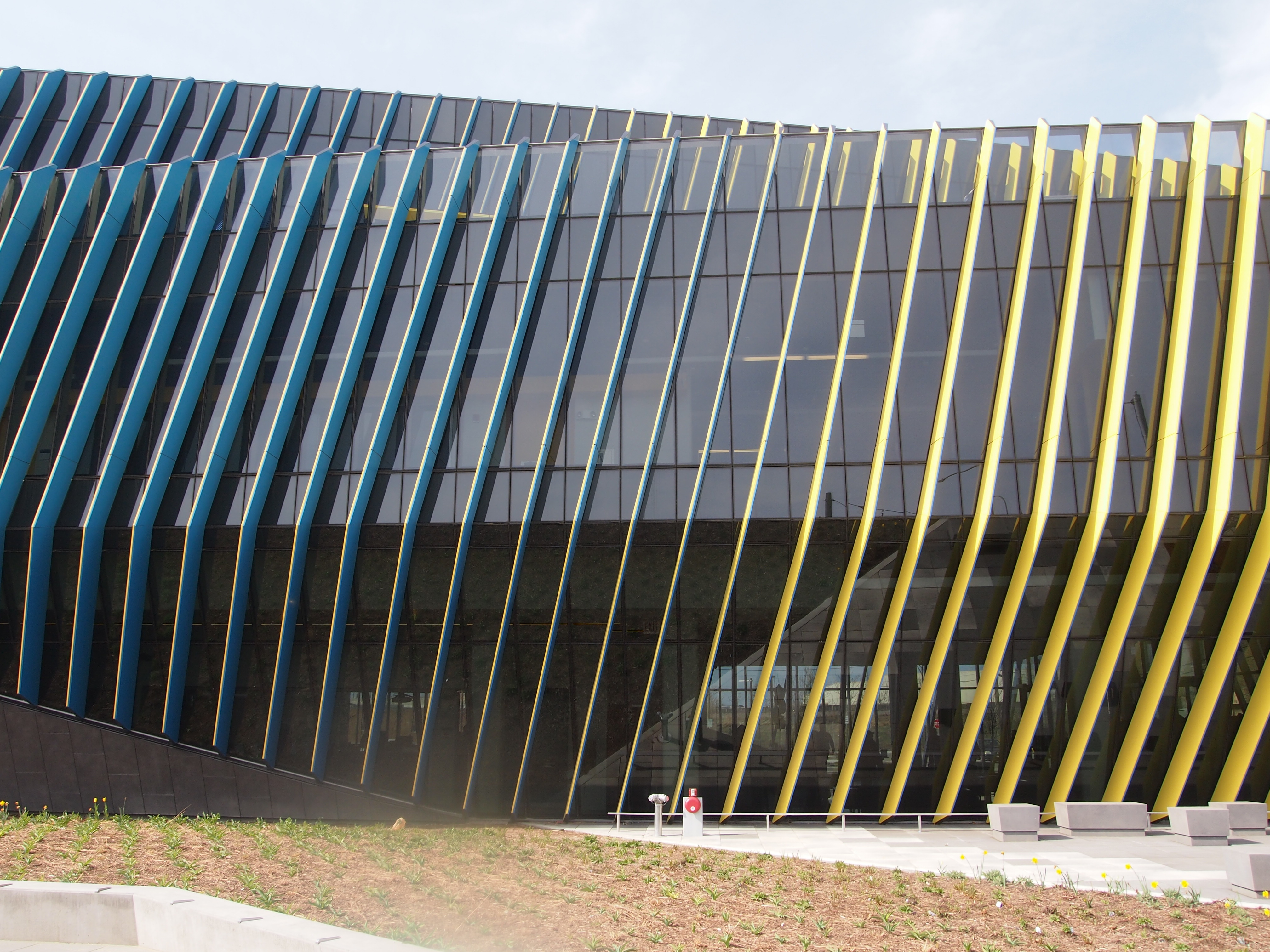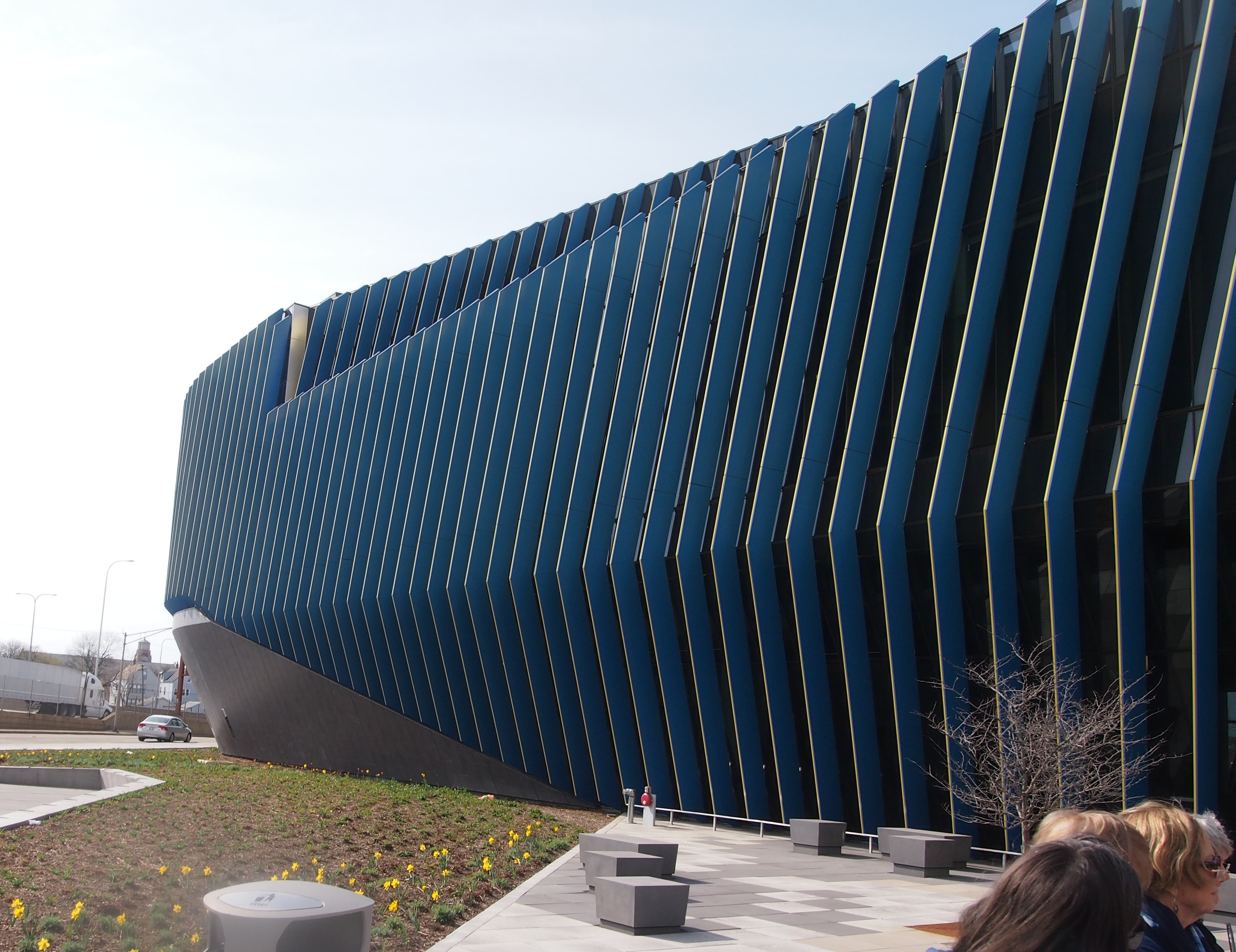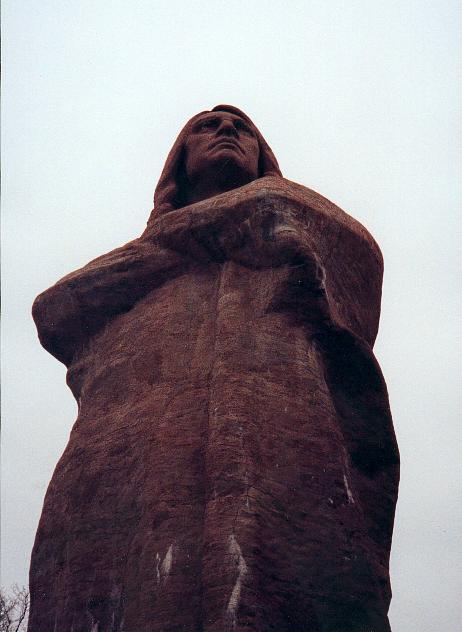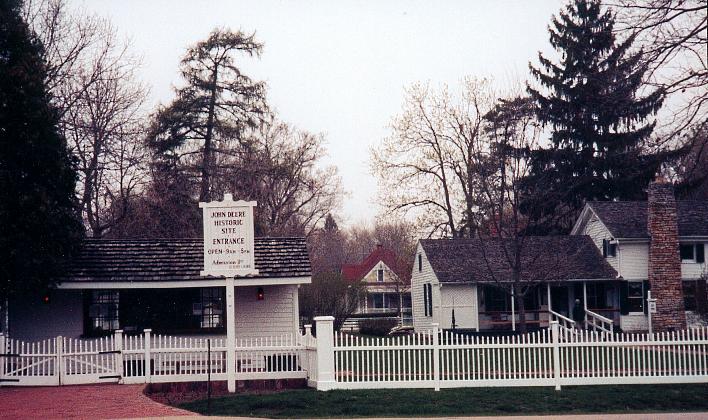One more scrap of former currency (for now). And by scrap, I mean that almost literally, since this Foreign Exchange Certificate from the People’s Republic of China measures 5.25 x 2 inches. It’s more like script than a note.
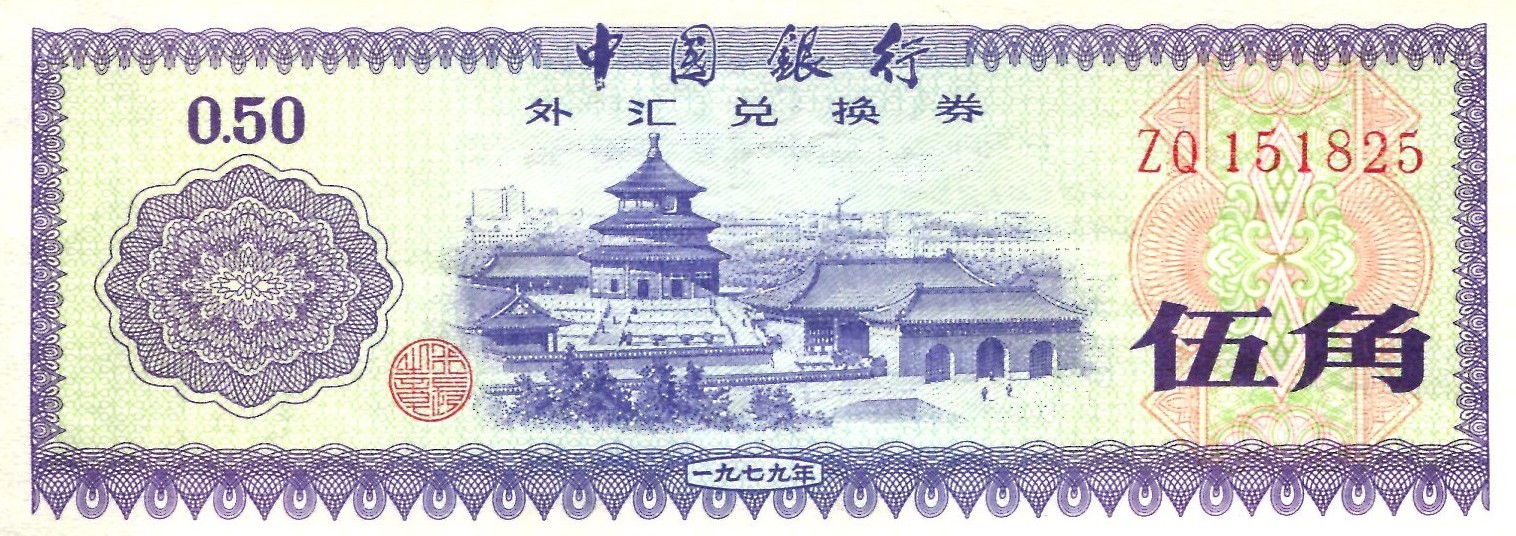 I’ve posted about this currency before, so no need to re-write about it, only re-post: “I only changed money once outside of the Bank of China, when Yuriko and I were sitting on a bench and she reminded me of the FECs that I had — not much, only about ¥110. I took them out of my wallet to look at them, and a man next to me on the bench, who had previously expressed no interest in us, suddenly offered a 1-to-1 exchange for RMB. I accepted the deal. I don’t know what profit he got from it, since FECs were being phased out, but he must have gotten something.
I’ve posted about this currency before, so no need to re-write about it, only re-post: “I only changed money once outside of the Bank of China, when Yuriko and I were sitting on a bench and she reminded me of the FECs that I had — not much, only about ¥110. I took them out of my wallet to look at them, and a man next to me on the bench, who had previously expressed no interest in us, suddenly offered a 1-to-1 exchange for RMB. I accepted the deal. I don’t know what profit he got from it, since FECs were being phased out, but he must have gotten something.
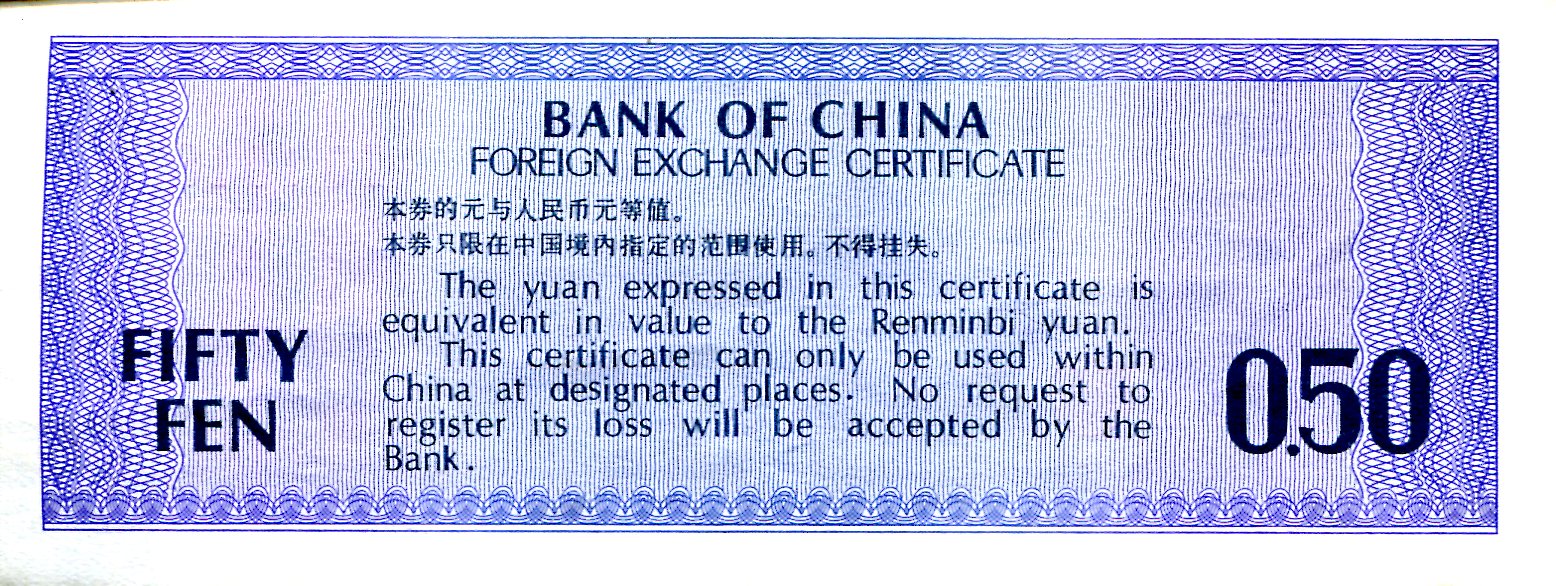 For some reason, probably my partiality to odd souvenirs, I kept this one. Maybe it wasn’t worth bothering with, since this particular note is 50 fen — or half a yuan, the base currency (it was about 8.7 yuan to the dollar then, so 50 fen was 6 cents or so). Ten fen is called a jiao, but I’m not sure how close an equivalent of a dime that is. That is, everyone understands that a dime is 10 cents, but it’s fairly rare to count in dimes. I don’t know whether the Chinese usually count in fen or some combination of fen and jiao.
For some reason, probably my partiality to odd souvenirs, I kept this one. Maybe it wasn’t worth bothering with, since this particular note is 50 fen — or half a yuan, the base currency (it was about 8.7 yuan to the dollar then, so 50 fen was 6 cents or so). Ten fen is called a jiao, but I’m not sure how close an equivalent of a dime that is. That is, everyone understands that a dime is 10 cents, but it’s fairly rare to count in dimes. I don’t know whether the Chinese usually count in fen or some combination of fen and jiao.
More from before: “RMB, or Renminbi (人民币), ‘People’s Money,’ is Chinese currency, of which the yuan is the main denomination. From 1979 to early 1994, just before we visited, foreigners in China were supposed to use FECs instead of RMB, which the government sold to foreigners at a premium to RMB. But as usual with this kind of thing, I understand that rule wasn’t rigidly enforced, especially by the early 1990s. We didn’t have to worry about it in any case, and thinking back on it now, I’m not sure how I got the FECs.”
